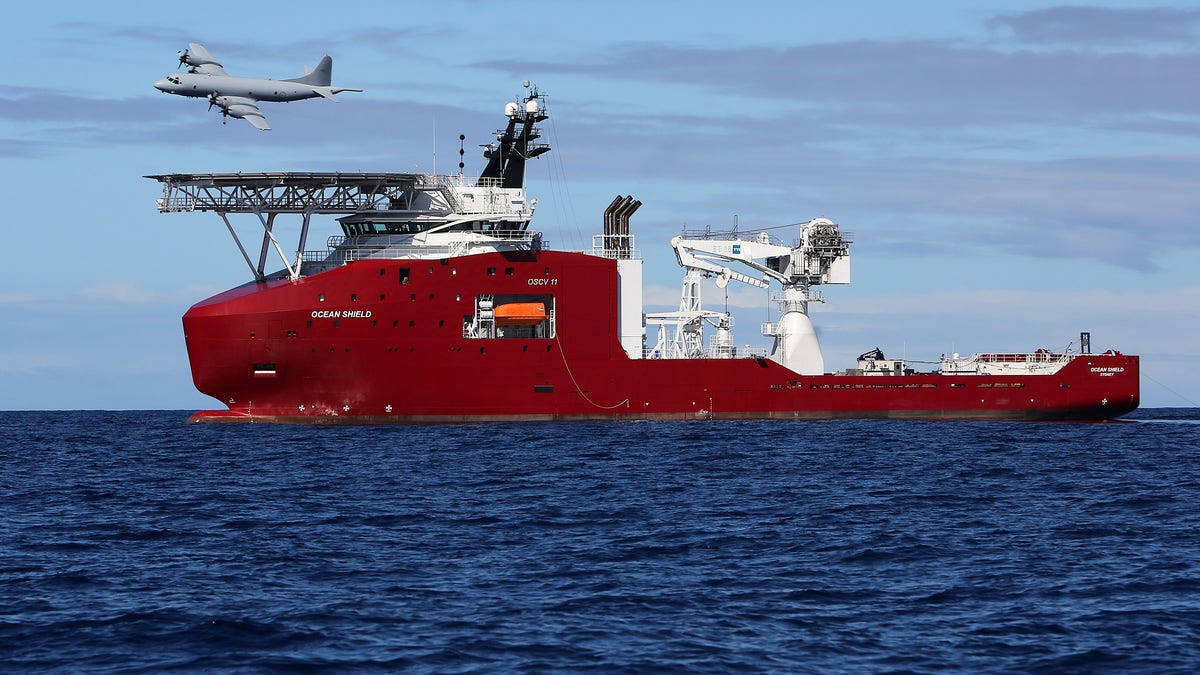
April 9, 2014 - Royal Australian Air Force AP-3C Orion flies past Australian Defense vessel Ocean Shield on a mission to drop sonar buoys to assist in the acoustic search of the missing Malaysia Airlines Flight 370 in the southern Indian Ocean. (AP)
The 239 passengers and crew on missing Malaysia Airlines flight 370 likely died from suffocation and coasted into the ocean on autopilot, a new report says.
Australian investigators revealed details of the 55-page report Thursday, suggesting that the Boeing 777 probably ran out of oxygen, causing all onboard to suffer from fatal hypoxia, Reuters reported.
The plane remains missing and there is no new evidence, but Australian Safety Board investigators came to the conclusion by comparing the flight with previous disasters with similar outcomes.
“Given these observations, the final stages of the unresponsive crew/hypoxia event type appeared to best fit the available evidence for the final period of MH370's flight when it was heading in a generally southerly direction,” the report said.
Investigators believe the plane was deliberately diverted thousands of miles from its scheduled route before finally diving into the Indian Ocean. The little evidence there is to go on suggests the plane crashed further south than previously thought, and was likely coasting on autopilot at the time of the crash.
"It is highly, highly likely that the aircraft was on autopilot otherwise it could not have followed the orderly path that has been identified through the satellite sightings," Australian Deputy Prime Minister Warren Truss told reporters in Canberra Thursday.
The report narrowed down the crash site from thousands of possible routes, while noting the absence of communication, the steady flight path and several other significant abnormalities in the course of the doomed flight.
Family members have waited more than 100 days to hear any information about the cause and location of the crash. The jet —traveling from Kuala Lumpur to Beijing-- disappeared on March 8, sparking the most expensive air and sea search in aviation history. Satellites, planes and ships from multiple countries have participated in the search, but no confirmed wreckage has yet been found.
The new report has prompted a shift to a new priority search area about 1240 miles west of Perth, a stretch of isolated ocean frequently lashed by storm-force winds and huge swells.
The area was determined by a review of satellite data; early radar information and aircraft performance limits after the plane diverted across the Malaysian peninsula and headed south, Truss said.
The next phase of the search is expected to start in August and last a year, covering more than 23,000 square miles, at a cost of at least 56 million dollars.
